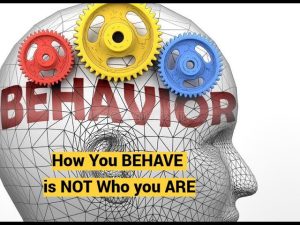Sexualizing Anxiety and Anxiolytic Sex: Misattribution of Arousal
1. Introduction to Misattribution of Arousal
- Definition and concept of misattribution of arousal wherein anxiety can be mistaken for sexual arousal and vice versa. Anxiety is often unrecognized and can be hidden behind sexual feelings or actions.
- Anxiety may be diffused, generalized, making it hard to identify, leading to eroticization of anxiety.
- Sexual arousal can also induce anxiety, creating a complex reciprocal relationship.
- Sex as anxiolytic can mask underlying anxiety, reinforcing misattribution.
- Gender roles influence anxiety and sexual arousal dynamics, with masculinity sometimes inducing anxiety and femininity reducing it or vice versa depending on context.
- Narcissism introduces autoeroticism linked with generalized anxiety, where masturbation acts as anxiety relief. [00:00 – 10:45]
2. Physiological and Cognitive Aspects of Misattribution
- Misattribution involves confusing physiological arousal caused by fear, exertion, or medical conditions with sexual arousal.
- Two-factor theory of emotion explains misattribution as a combination of physiological arousal followed by a cognitive label, which can be erroneous.
- The body unconsciously reframes fear or anxiety into sexual arousal as a coping mechanism, making the experience socially acceptable and pleasurable.
- The presence of attractive vs unattractive people influences how arousal is perceived and justified.
- Medical conditions such as tachycardia complicate recognizing true sexual arousal versus physiological symptoms.
- Monitoring one’s body to discern the true cause of arousal is crucial to avoid misinterpretation. [10:46 – 26:30]
3. Key Research Studies on Misattribution of Arousal
- Dutton and Aron’s 1974 suspension bridge study demonstrated that men experiencing anxiety (fear from crossing a shaky bridge) misattributed their arousal as sexual attraction, requesting phone numbers more often compared to a control group.
- Schachter and Singer (1962) highlighted that people attribute physiological arousal to recent thoughts or emotions, not necessarily sexual arousal.
- Studies showed that physiological arousal enhances perception of attractiveness for the attractive and increases dislike for unattractive people.
- White et al. (1981) confirmed that unrelated arousal, including from exercise or alcohol, increases perceived attractiveness.
- Loftus and Ross (1974) found that misattribution can modify conditioned emotional responses.
- Kendrick et al. (1989) challenged previous theories by showing arousal leads to increased attraction even when individuals are aware of the true source of arousal (response facilitation model). [26:31 – 44:50]
4. Implications and Warnings
- Misattribution of arousal can lead to problematic and compulsive sexual and romantic behaviors, including stalking and coercion in attempts to reduce anxiety.
- Regular physiological symptoms should be evaluated medically to exclude conditions like tachycardia.
- Mislabeling anxiety as sexual attraction may cause emotional confusion, unhealthy attachments, and social problems.
- Gender roles play critical roles in how anxiety and sexual arousal interplay, so awareness is necessary.
- Encouraged critical reflection on one’s state before attributing feelings to sexual arousal to avoid self-deception or harmful behaviors.
- Recognize that sexual arousal may also evoke anxiety, and breaking this cycle is important for healthy psychological functioning. [44:51 – 59:59]
End of Summary






